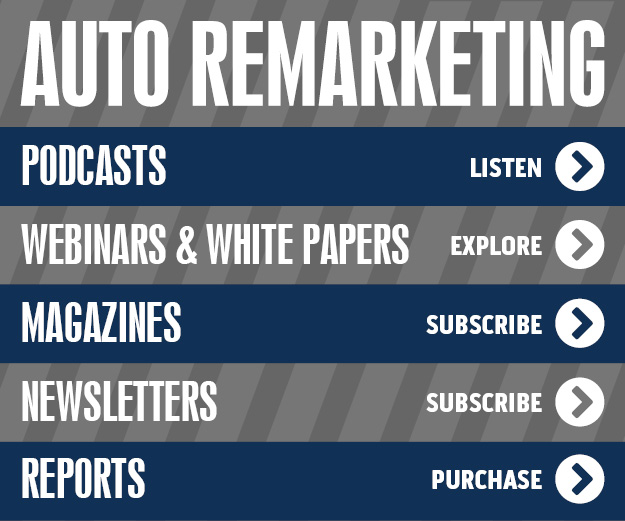Webb: Economic Conditions Send Mixed Message to Industry
ATLANTA — Manheim's Tom Webb picked up on a Gallup poll that examined where the bulk of modest gains in national retail sales have derived this year. Webb called the poll findings "somewhat perturbing from a used-vehicle perspective."
The poll suggested households with incomes of $90,000 or more annually have accounted for majority of increased retail spending thus far in 2010.
"Normally, that sort of trend can be first discerned from sales patterns at high-end versus discount stores," Webb shared.
"But, with higher income households now increasingly cross-shopping at all types of stores, the Gallup poll provides confirmation of the logical result one would expect from the widening gap in labor market conditions based on education level," Webb continued.
Webb also described recent retail sales performances as "confounding." Though better-than-expected reports came out in March and April, he noted retail sales fell 1.2 percent in May.
It prompted Webb to ask, "So will consumers hunker down further in the months ahead or loosen up?"
Webb attempted to clarify retail sales behavior and how it could eventually benefit dealers and others associated with vehicle remarketing.
"May retail sales were reflective of the loss of several temporary stimulus programs — state and local credits for home buying, rebates for appliance purchases and the massive tax refund season," Webb explained.
"As such, May should be considered the more normal trend," he went on to state. "With readings of consumer confidence continuing to show increases, it won't take too much private sector hiring to once again lead to higher retail sales."
Though consumer confidence might continue to tread higher, Webb cautioned that cyclical unemployment problems are threatening to become structural.
Webb said May's employment report was a "clear disappointment" since 431,000 jobs were added but 411,000 of them were Federal Census workers. This meant private sector employment grew by only 41,000 after advancing by 218,000 in April.
Webb also noticed what he depicted as "very troubling," which is the widening spread in unemployment rates based on education level and the rise in the long-term unemployed
Federal officials reported the overall unemployment rate dipped to 9.7 percent in May from 9.9 percent, but Webb noticed that various parts of that rate all went up with the exception of workers with college degrees. He also was alarmed by how workers unemployed for six months or more has jumped to 46 percent from 28 percent in May of 2009.
"Employment data is, however, notoriously volatile, so it is important to also look at weekly jobless claims and other government reports on the state of the labor market," Webb reminded the industry.
Webb also remained hesitant about what initial jobless claims revealed about the nation's economic status. Federal officials indicated the four-week moving average for initial jobless claims has remained in the 450,000 to 460,000 range for the entire year.
Not all labor news was negative, according to Webb.
The Manheim economist noted the Labor Department's Job Openings and Labor Turnover Survey (JOLTS) had some encouraging signs. JOLTS showed that during the past three months, more people have quit their jobs than have been fired.
"The ‘quit rate' is strongly associated with higher consumer confidence in the state of the labor market and usually precedes major turnarounds in hiring," Webb emphasized.
Webb wrapped up the industry brief by tackling a question he's been posed often recently. Although the Consumer Price Index fell 0.2 percent in May, is the nation's economy headed for deflation?
"Not likely," Webb began, "although, yes, we have entered an unprecedented period. Core inflation (minus food and energy) has risen only 0.9 percent over the past year. That's the smallest rate of increase since 1966.
"This helps consumer purchasing power, but it often puts businesses in a bind as some of their input costs may rise faster than what they can pass on to the consumer," he went on to say.
Webb elaborated on this point by delving deeper into elements more closely associated with the auto industry.
"It is interesting to note that many of the components of personal transportation expense have risen considerably faster than overall inflation," he offered. "For example, on a year-over-year basis gasoline is up 27 percent, used vehicles are up 16.2 percent, and motor insurance is higher by 5.3 percent.
"The total personal transportation segment, which includes each of these items and more, is up 10.2 percent," Webb continued. "If this trend continues, history suggests that consumers will shift budget allocations away from the sectors that are rising in price."
Webb finished his answer by returning to the point about possible deflation.
"But, as to deflation — given the amount of liquidity poured into the economy over the past year and a half, spiraling deflation is a scenario that is hard to imagine," he indicated.
"However, it is noteworthy that at the same time the Federal Reserve Board is testing out new tools to drain liquidity from the system, they are also contemplating what steps they might take if the financial markets and the economy were to weaken again," Webb added.
"A schizophrenic Fed — that's not comforting," he concluded.


